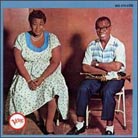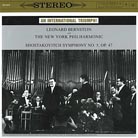|
|
|
|
This review page is supported in part by the sponsors whose ad banners are displayed below
|
|
 |
|
All in all I must say that setting up the Classic Wood was far less of an adventure than expected. Folks intimidated by all the esoteric voodoo surrounding table setups can consider this table with confidence since it clearly does not require a degree in micro mechanics to sound quite good. Another point of interest is that the table has been as non-fussy in use as it has been to set up. I found it particularly apt at tracking the most damaged LPs I could throw at it, including some 60-year old mono recordings found at Goodwill which the cartridge tracked without problems, even a very badly scratched, brand-new re-edition of Beethoven's 8th and 9th Symphonies which never skipped despite 20dB clicks and pops coming through the speakers.
The reputation of Acoustic Solid turntables for their reliability is excellent throughout Europe and nothing I saw or experienced over the past three months leads me to believe that this reputation is anything but well deserved. Sonically the table is as much a jewel as it is structurally and if 'classic' turntable sound means anything to you, that's what the Classic Wood epitomized for me over the past months - classic with a subtle twist however, a classic sound which has learnt a few lessons since the 1960s, a classic sound that cleaned up and lost distortion to be left with a golden and rich vinyl appeal. If you are looking for an ultra-analytical table that will dig the last particle of dust out of the groove and let you hear it in all its - um, dustiness, look elsewhere. Clinical is not the name of this game.
|
|
|
The very first disc that made it on the table was my old copy of Ella and Louis (one of the few discs I saved) which I now also own as a Speakers Corner re-issue [Verve MG V-4003] and the first few minutes revealed a lot of what I would come to know about the Classic Wood's sonic signature. Louis Armstrong's voice was coming from a point far behind the speakers, larger than life (maybe just a little too large) but infused with a richness of tone and texture I just did not expect. Ella's young voice on the other hand, coming from the same spot, was perfectly sized with just a touch of soft golden glow that made it sound a little warmer than I am used to but certainly more seductive still. Louis' trumpet erupted and projected with all its intensity, at times acidic, at times sweet, at times muted and at times overwhelming but always, as with Ella's voice, with the slightest touch of warmth to ensure that the listener would never have to take cover and protect herself from aggressive treble.
|
|
 |
|
Surprisingly the piano and other accompanying instruments receded in the background compared to how I remember this disc sounded on the Revox. That's probably one of the most endearing traits of the Classic Wood package (I would not dare venture a guess about which role the table, arm or cartridge play respectively)... this tube-like ability to pinpoint the center of attention, bring it forward while keeping the surrounding instruments in a supportive but non-intrusive backward position. Depending on your tastes and desires, this ability which I heard from Vivaldi's Violin Concerti to U2's How to dismantle an atomic bomb will either delight you or seem like unnecessary tinkering with the signal. What I can predict is that it won't leave you indifferent.
My bias in favor of anything enabling the emotional intensity of vocals makes me fall for this type of presentation time and again and the slight warmth detected in both Ella's and Louis' voices only increased my addiction to the Classic Wood's way with the music. But I did say that the Acoustic Solid introduces a twist to this classic sonic aesthetic which to me anchors it firmly in the present. If I left the review now, you could picture the Classic Wood as also lacking bass control and throwing uncertain images as can be customarily associated with a 'classic' tube sound - and you could not have moved farther from the truth.
|
|
|
|
 |
|
Coming off three months of auditions with the imaging and soundstaging Esoteric SA-60 champion, I was prepared for a major letdown with vinyl - which absolutely did not happen. The Classic Wood soundstages broadly and deeply when inspired by the record as it was with the bass on U2's 18 Singles [Mercury 0602517135505] spreading far beyond the speakers and the walls of my listening room. Yet this isn't a non-discriminating bubble effect impacting all recordings in the same fashion. The Classic Wood perfectly sized and positioned Yehudi Menuhin's violin in the legendary recording of Beethoven's Sonatas with Wilhem Kempf [a Deutsche Gramophone re-issue by Universal Records UCJG-9018] where the piano occupied the full width of the stage, the violin on the other hand floated higher and was more focused in the musical landscape as it should.
A non-negligible part of the magic on this record derives from the tonal richness of Kempf's piano which sits stably in the middle of the stage and reaches deep into the lower registers while at the same time offering a rarely heard perspective into the rich harmonies from the wooden carcass. I am usually not thrilled with the cooler and drier colors of most Deutsche Gramophons but the re-issue by Universal Records of Japan is quite superb (except for an annoying low-level leak of the right channel into the left, which is perfectly audible through earphones). With the Classic Wood's assistance to ensure full tonal development, it has become the reference performance of these pieces in our house, eclipsing even my beloved Perahia/Ashkenazy discs, handicapped as those are by the shrill-sounding CD release from the late eighties (I have not heard the analog re-master released a few years ago which may have closed the gap).
|
|
 |
|
Initially I thought the Classic Wood limited in bass extension but after about 100 hours of play (which included break-in of the phonostages of my integrated amplifiers), this part of the music too found its rightful place. Consistent with its classic sound, this table favors mid and upper bass development over the deepest extension as was readily obvious in both the "Elephant" from Saint-Saens' Carnival [Klavier Records KS527] on which the upright bass was a few dB below the surrounding instruments or on the vinyl release of the Gorillaz' Demon Days [EMI 07243 873838 1 4] which did not rattle the room as the CD does. Above 40Hz, the Classic Wood |
|
 |
|
delivered a fully developed sound, detailed like only vinyl can be in this range and quite nimbler than I had expected from a mass-loaded table.
|
|
|
Many European publications have described the bass quality of the Acoustic Solid tables as bringing together the depth and solidity of German mass-loaded designs with the agility of British tables. I may not go quite that far since a Rega P7 table is still capable of more responsiveness and quickness than the Classic Wood (without near the latter's physical
|
|
|
impact) but the German table was certainly faster, tighter, more solid and detailed down below than I had expected, thus perfectly capable of keeping up with the dance beats of the Gorillaz to never once sound bloated or slow - quite a performance many a CD player won't match. The Classic Wood's bass reminded me at times of a tiger, powerful and fluid at once, neither a cheetah rushing through the brush nor a leopard scaling a tree.
Since I mentioned the Gorillaz' Demon Days, let me take you on a few tangents away from the table for a minute. My first is a rant on the cost and quality of vinyl re-issues. Demon Days can be readily found for about $17 in the US. This price will buy you a two-LP edition with gorgeous full size prints of the original Gorillaz' illustrations on both sleeves and jacket, pressed on heavy vinyl and bringing a perspective on their music unlike anything I have heard. Nuances I did not know existed between the various electronic tones were revealed by the Classic Wood. Instruments didn't pile up atop each other like a train wreck and a landscape emerged that remained hidden under the CD's dynamic compression but was fully revealed by the vinyl thanks to very conservative pressings of about 10 to 15 minute per side. In other words, you won't know this disc until you've heard it on vinyl. It's not even close and worth every penny asked. Actually, at that price it's a steal.
|
|
|
|
On the other end of the spectrum we have $75 for a 2LP re-issue of Beethoven's 8th and 9th Symphonies by Universal Records of Japan. If I admire the mastering job of the Japanese engineers on this disc and the previously mentioned violin sonatas, I am shocked by their unacceptably poor quality control. The four LPs purchased in this so-called limited edition series all arrived with some level of damage, from heavily scratched and horrible sounding (as though the disc had been cleaned with an abrasive) to just plain noisy (more noisy in fact than most of the used LPs I bought for a dollar each at Goodwill). All records arrived sealed with absolutely no sign of damage on the outside jacket, leading me to believe that they left the factory in that state. I understand the desire to take advantage of the vinyl revival. I even understand the motive to charge stratospheric amounts for a limited release that is expected to increase in value as it becomes a collector's item. But at close to $40 a disc, I also expect perfection, especially since EMI can give it to us for 1/5th the price on their Gorillaz discs. For now, I have excluded Universal Records from my shopping list. There are thousands of other perfectly fine discs to purchase new or used and the latter -- the hunt for the lost treasure at $1 -- is responsible in no small part for my revived interest in vinyl.
One element of importance to notice while I am on the topic of used discs is that the Classic Wood table is particularly kind to older records. I don't just mean its ability to track uncertain grooves but also its talent to make sometimes harsh-sounding oldies fully enjoyable. Even well preserved 50 and 60-year old mono pressings from the flea market sound quite remarkable and the table handled with ease their limited dynamic range and uncertain tones to give a perfectly enjoyable performance. I do own a few CDs from mono soundtracks of the same period and they are plainly unlistenable - shrill, nasal and just flat. Not through this turntable. I was actually able to once again enjoy long gone pianists like Robert Casadesus or even Walter Gieseking and finally understand what their genius was all about.
This leads me to my second tangent - trying to understand what is so addictive about vinyl. Unquestionably the sound of the Classic Wood plays a big role in this. It fills a need I've had for a few months now to combine the added resolution I have built into my system over the past year with a renewed focus on the performance of the interpreters rather than the performance of the gear itself - what Jeff Day calls a Music Lover's focus and I usually call soul or emotional intensity. But that's not the only reason why I believe vinyl is so enticing, at least not for me. What I found vinyl brought me is a far more sensually involving experience, nothing racy mind you but more a reference to the involvement of all senses in the musical enjoyment. I got a feel for that days prior to the table's arrival when my wife and I opened the first shipment of LPs purchased from a famous on-line vendor and sat down together on the couch, looking at the exquisite artwork and pictures printed on U2's 18 Singles or the Demon Days illustrations. I can't remember a single time when we both sat down, no music playing, and actually took the time to look over a CD or SACD jacket. Yet there we were, handling those few discs with reverence and admiring their designs.
|
|
|
|
There is another fundamental difference about vinyl. Because LPs are so easily damaged and require care and attention, they force you to respect them. I personally don't rub down my CDs with beauty creams (although I don't question their sonic benefit; I just have never felt the desire to go through the ritual) yet I do clean my LPs and take regular care of them, religiously going through the carbon-fiber brush routine before lowering the stylus on any disc. The deeper tactile involvement somehow enriches the experience. As does the smell of the discs and cleaning products, not to mention the regular need to get up and turn the record over. Because using vinyl is not as convenient as just dropping a CD in a drawer and hitting play, one can't use LPs for background music. It's not even worth starting if you're not sure you can dedicate 100% of your attention to the music. Vinyl changes the whole experience of listening, transforming it from easily accessible fast food to a more rarefied yet also more fulfilling experience involving all senses. If you don't believe me, just give it a try.
|
|
 |
|
| Back to the Classic Wood. One of its strengths is actually to not interfere with this experience. It does not attract undue attention by being fussy or throwing unnecessary details at you. It lets the music grab you when deserved (not all music can and should get one's attention) and serves it to you under the most fleeting lights possible. Take for example the previously mentioned Carnival by Saint-Saens. I don't think I have ever been as aware as |
|
in this version of the animal-like characteristics of the music. By revealing the subtle and not so subtle instrumental tones used by the composer, the picture of each animal is painted more accurately and in starker details than ever. It is striking on this disc how transparency can actually be completely divorced from ultimate detail retrieval. Each instrument comes through with more texture, harmonic exactitude and believability than on most discs I have heard before, yet you would strain to hear the lowest level signals. A chair creaking for example would go completely unnoticed although it is there as I can hear it using earphones.
|
|
 |
|
What the Acoustic Solid table will not do is soak everything up in a soft and syrupy haze. It is a very accurate table that strives to reproduce the whole gamut of nuances on a disc while the tonal range reproduced will be slightly shifted towards richness and warmth without excess or excuse. It does not mean that very bad recordings will suddenly sound good. The proverbial musical junk still stinks as it rightly should. That was painfully obvious on the first copy I purchased of Mozart's Magic Flute directed by Karl Boehm [Deutsche Gramophon DG136 440]. Unlike the Gorillaz LP, this collection of extracts stretches the limit of how much music can be jammed onto a single side of a black disc and still be called audiophile. Barely. As a result, the famous aria between Papageno and Pamina is unluckily relegated to be the very last track of side A, squeezed into an area where most other discs do not store any musical information. In this tight space, Evelyn Lear's otherwise charming voice is severely distorted. It is so on any table I have listened to and it is so on the Classic Wood as well. This table makes beautiful voices glow and thrive but it does not perform miracles and it does reproduce poor material accurately. It can, as mentioned before, take the edge off from older or harsher recordings but there is a limit to this ability.
From a purely audiophile standpoint, the Classic Wood is certainly not the ultimate in microdynamics or ultimate bass and treble extension. Maria Stader's beautiful soprano in Mozart's Mass in C Minor K427 directed by Ferenc Friczay [Speakers Corner/DG 138 124] did not possess all its usual airy and sweet textures nor did the harpsichord in Vivaldi's Four Seasons [Divox 79404-1] carry the ultimate metallic overtones (but Carmignola's Stradivarius on this disc was as intense and true as in any concert I have heard him play - truly mesmerizing).
|
|
|
|
By comparison, Esoteric's SA60 SACD player, in addition to being a great organizer of space and sound (at which the Classic Wood excels too), is also a master of dynamics small and big. That's probably the only area where I felt slightly short-changed by the Classic Wood. On major symphonic works like Shostakovich's 5th Symphony directed by Bernstein [Cisco Columbia MS6115], the powerful surges of the New York Philharmonic Orchestra did not quite have the amplitude the SA-60 was capable of and in addition, the small changes in sound level of each instrumental groups were not quite as well differentiated. Returning to Vivaldi's Four Seasons, the string pizzicatos were not as sharp, the edge of transients a little more rounded than perfectly desirable when reproducing a baroque ensemble, leading to the overall impression that small changes in dynamics were not quite as important. |
|
 |
|
This gave the Classic Wood a more relaxed presentation than for example my Musical Fidelity A5 CD player and certainly did not feel as rigorous as the SA-60, both of which carve out more precise attacks. Yet the Acoustic Solid never fell to the boring side, not even close. Jean Martinon's direction of Dvorak's Slavonic Dances [Decca / RCA Victor LSC 2419] is probably the fastest, most rushed and almost breathless version I know of those pieces and that's exactly how the Classic Wood played the disc. Initial string attacks did not have quite the bite they have on other tables I've heard but the Classic Wood did not slow down any of the musical flow either. It did not impede it from rushing through the speakers. Ultimately, this ability matters more to me than absolute transient sharpness. No matter what material I played, the Classic Wood never felt slow or heavy; relaxed and fluid yes, leaning back a little rather than sitting on the edge of the seat but never constricted or boring.
Take Dvorak's 7th Symphony directed by Giulini for example [EMI ASD 3325]. It is one of those performances that has been playing on my systems in one form or another for over 15 years. I can reasonably say that I know the piece in all its dynamic nuances and not once did I feel the music being restrained by this table. On the other hand, I was impressed by the harmonic complexity and lushness of the string sections as well as the ultra-spacious soundstage and concert hall ambiance. I could not hear every single violin nor did I want to but the lush string tones were just gorgeous.
|
|
|
|
 |
|
Ultimately the Classic Wood really won me over with its reproduction of voices. As I stated in my review of the SA-60, I found its midrange at times just a little shy and dry. I am sure measurements would prove that it is actually more neutral than the Classic Wood in this part of the range yet I could not find it as engaging. Voices on the turntable just acquire a level of humanity that is uncanny. By humanity I mean the feeling that the singer is actually there in front of you, in the flesh (sometimes just a little more flesh than they really have).
I know this is not due to ultimate detail retrieval. I have heard more ultra-low level information on other tables. Through the Classic Wood though, resolution felt like a balanced combination of flow, texture and tone that made voices much more credible. I also know that it is not just a vinyl trick. Not many tables I listened to over the past few weeks could create this illusion as convincingly as the Classic Wood (but they all could to some extent) - at least not tables in the same price range.
|
|
|
 |
|
Ultimately the fact that I found the Classic Wood more engaging is exclusively a matter of personal bias. The Esoteric SA60 remains quite unique in its ability to tame the digital demons without using any added warmth or distortion while maintaining a very linear presentation from top to bottom. From that perspective, the Classic Wood could not be more different. It makes clear editorial choices, giving the midrange and voices (especially male voices) a credibility that few other pieces of equipment have ever demonstrated in my system. It also emphasizes the upper and midbass while slightly short-changing both frequency extremes and transient edges. Where the Classic Wood truly surprised me was in its ability to make music flow as if liberated from a weight; as well as paint huge musical landscapes without compressing musicians on top of each other. Thus far only the SA-60 has shown this level of credible soundstaging and imaging in my system. The fact that the Classic Wood, when paired with the McIntosh amplifier, actually matched it is quite an accomplishment. That it matched it and delivered fully developed textures, tones and colors is certainly its greatest strength.
In conclusion, reviewing a component without any true in-house benchmark is quite a challenge. It becomes even more of a challenge when the usual audiophile attributes don't apply to describe what said component does so well. Music lover's sound, soul, emotional intensity, non-linear emphasis or distortion... call it what you will depending on your inclinations. All I know is that the only way this table would make it back to the distributor would be if I decided to acquire the even more gorgeous Solid Wood or One to One instead. When my reviewer's analytical brain is switched off, nothing in a long time has come close to the musical enjoyment the Acoustic Solid turntable has brought.
Had the Classic Wood made it to our house a month earlier, it would have been part of my Favorite Discoveries of 2007. Since the 2008 wrap is still 11 months away, my suggestion is that you don't wait that long and give it a listen now. I turned 35 just a few days ago, rediscovered vinyl with a passion and a wonderful birthday present now sits on the top shelf of the equipment rack. I just have to write a check for it... |
|
|
 |
|
|
Quality of packing: Very good packaging, all elements are tightly set within the box and individually boxed or wrapped.
Reusability of packing: The outer box is quite sturdy and should withstand multiple shipments but double boxing would be preferable.
Ease of unpacking/repacking: Because each component in the box has a specific place to allow everything to fit and prevent movement, repacking can be challenging without pictures or a diagram (not provided in manual).
Condition of component received: Flawless.
Completeness of delivery: Complete.
Quality of owner's manual: Table assembly instructions are clear and easy to follow. Rega's instructions for its RB300 and cartridge alignment are laconic and could use more details.
Website comments: Limited section in English for a good opportunity to polish up your German.
Warranty: 1 year.
Global distribution: Check website for distributors. There is broad worldwide distribution.
Human interactions: US distributor was always professional and courteous, fast and responsive.
Other: All models arrive standard with a small pouch to keep mounting tools and gloves for attention rarely seen even on tables costing many times more. Electronic speed regulation is standard from the entry model on up.
Pricing: Considering the current € to $ exchange rate and the traditional distribution scheme to ensure the highest level of personal advice and service possible (i.e. not Internet resellers), the base price of the Classic Wood package is quite impressive. The surcharge for the RB300 on the other hand is higher than the typical difference in price between the two arms. The Solid Weight retails for the same price as most competitive record clamps and is very effective. There are many stylus force gauges on the market though which will accomplish the same for less money than Acoustic Solid's.
Application conditions: The table is sensitive to leveling but even more importantly to the quality of your support and vibration control. My Isol-pads provided significant improvement but I suspect they are far from the last word in what's possible to squeeze from this table.
Final comments & suggestions: The Ortofon 520mkII, while a nice entry-level cartridge and very synergistic with the table, is probably the most limiting factor in this package. There may be room for improvement with more ambitious cartridges, with the Ortofon 2M Black, Dynavector 10X5 and Denon DL103 all reported as being very good mates. The Classic Wood deserves that you experiment and find the best mate within your means.
|
|
|
|
|
|
 |
|
|
|
 |
|
|
|
|
 |
|
|
|
|
|
|
|
|
|
|
|
|
|
|
|